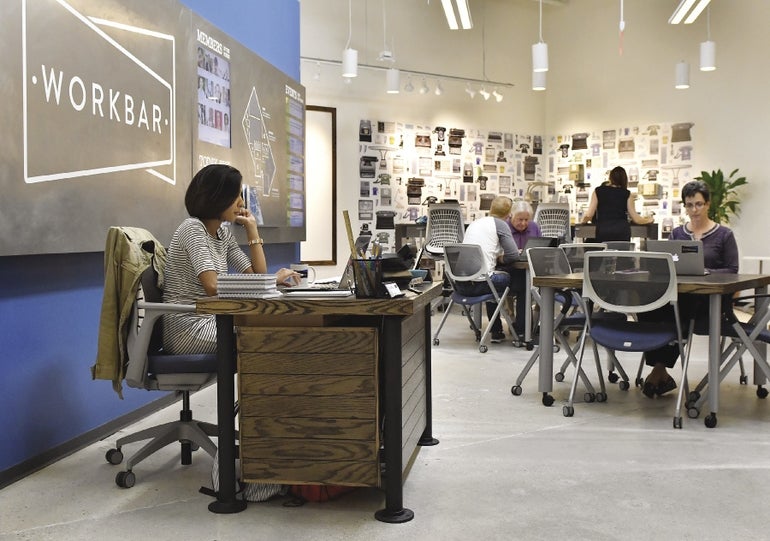Staples Plan B: Redefining a brand
There is no easy button to move Staples forward following the collapse of its merger with Office Depot. But there is a Plan B, and it is the new Staples.
Within hours of the announcement of its failed merger with Office Depot in May, Staples presented its plan to transform the Framingham company beyond office supplies. The plan focuses on serving the middle-market of businesses sized between 10 and 200 employees, while right-sizing the rest of the company and making the most of its retail locations.
Make no mistake: This may be plan B, but it's now the only plan Staples has and the company is fully committed to it.
“We had to have a plan B. We were hoping we weren't going to have to announce it,” said Joe Doody, vice chairman North American operations. “Here it is. Plan B. And we are driving now plan B, and the marketplace isn't going to wait for us, so we are going out there and getting after it.”
What remains to be seen is whether this new Staples will be different enough from the old company to make a difference. In the digital age of online orders and a steady decline in office supplies such as paper and toner, it may be too little too late.
The new Staples
The middle market comes up in nearly every conversation Staples has with its new strategy. While technically just one part of the new strategy, it is clear that it is central to Staples moving forward. The company began pursuing this market in the early 2000s – getting about 5 percent penetration through its office supplies – but now has a strategy to tap into even more of the market.
The angle is offering products and services outside of core office supplies, through means such as a recently announced partnership Managed by Q to connect small businesses to more than 100 on-demand office services. These beyond office supply sales (BOSS) include everything from technology to cleaning to printing services and in the mid-market segment account for $70 billion in business services compared to $10 billion in office supplies.
“We are trying to bring together not just selling products but services,” Doody said. “The more we have realized over time that this market is changing the more it pushes us to go to different areas of growth.”
And tapping into these BOSS sales also means changing stores to offer services such as a deal with Boston coworking space firm Workbar to put the flexible office spaces inside of Staples stores. These varieties of services are about increasing the relevancy of Staples to the customer and boosting foot traffic, said Doody.
“Our traffic has been declining, and we need to find more ways to get more traffic into the stores and Workbar is an example of one of the ways to do that,” he said.
These plans, and the other two pillars, were impressive to have laid out and ready to go following the failed merger, said Oliver Wintermantel, an analyst for Evercore ISI Group, and solidified the company as better positioned than Office Depot.
Cutting the fat
But not every part of new Staples is about moving into new ground, some of it involves retrenching and solidifying its base. This means cuts amid the company's retail locations, which have been going on for some time with 345 stores, or 18 percent, closed since 2011.
The company is on track to close 50 stores this year, and with 225 store leases expiring in the next five years, Doody said there will be more opportunities to get store numbers to the right size. The cuts aren't just in America, with the company hoping to sell off all its stores outside of North America, having sold off all United Kingdom stores.
This sets up a focus on North America and an expansion into the mid-market, with the company acquiring Capital Office Products, who is a player in the middle-market throughout a number of southern states like Florida and Georgia.
Too little, too late?
The big question that remains is whether all of this will be enough to turn the direction of a company with years of momentum behind a focus on office supplies. Sales related to its core office market have been slipping for years, and yet it wasn't until 2016 that the company had laid out a comprehensive plan to come to terms with the digital age.
Unless it can capitalize on these new areas, Staples will be stuck striving to get a larger piece of a shrinking market, said Wintermantel. He agrees with the company's plans to cut its European market, and ideally they would have much fewer retail outlets or none at all, but even then all these plans may be a bit too little too late.
“That's exactly what it is. It's a little late and probably not making a big difference,” he said. “They're in a tough position.”
But Staples is moving fast. Changes that would take some companies years to manifest have already taken place since the final announcement regarding Office Depot. And in talking to Doody, it becomes clear that many of these initiatives were queued up but on hold pending the years of integration work that would have followed a merger with Office Depot.
Merging the two companies would have taken years, said Doody who would have headed up integrating the two companies. So the company could not simultaneously move forward with the initiatives in plan B, but now it is all hands on deck.















0 Comments